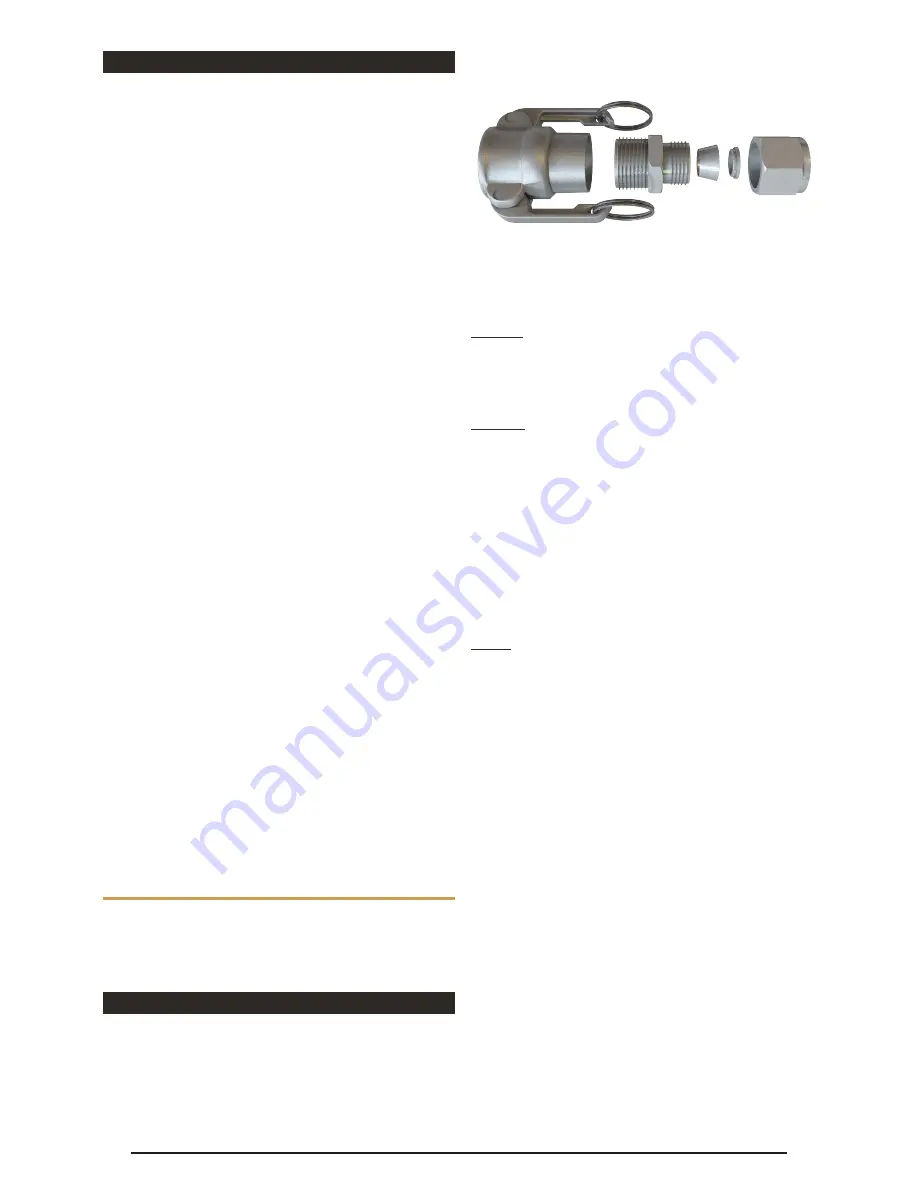
11
4.2 - BEFORE YOUR FIRST BREW
Close the tap and riser pipe valve. Add about 5 litres of water to
the brew kettle.
• Check for any water leakage underneath the brew kettle or
around any of the fittings. If any water is found, check and
tighten fittings. Check that the gaskets are properly inserted.
Read instruction for pump maintenance (described later in
this user manual), and check silicone hose and fittings.
If there are no indications of any leakages, connect the lid hose
CamLock connector to the riser pipe, place the lid on top of the
boiler and connect the power cord to a wall outlet. The built-in
light in the brew program selector will now illuminate.
Switch the brew program selector to “
• • •
” and press “ON”
button on the brew controller. This will initiate heating of the
water to 100°C. Wait until the water is boiling, then open the
riser pipe valve before switching on the pump. Let the pump run
for about 10 minutes in order to clean the equipment pipes and
pump.
• While the pump is running you should check for leakages
around fittings and tighten the fittings if required.
Stop the pump and close the riser pipe valve. Disconnect the lid
hose and remove the lid. Attach the whirlpool pipe. Open the
valve and start the pump again. Let the pump run for another 5
minutes.
• Check for leakages around the whirlpool pipe fittings. Tighten
the fittings if required.
Connect hoses to the immersion cooler and connect one hose
end to a cold water tap. Place the other hose outlet in a drain
opening. Turn on the water.
• Check for leakages around the cooler pipe fittings. Tighten
the fittings if required.
Chapter 5
USING THE
BEER BREW
AUTOMATIC™
This chapter will explain brewing in general, and how to use
the brew controller and the program selector switch during
brewing.
5.1 -
ABOUT BREWING BEER
Brewing beer is all about converting the grain starches into
fermentable sugars. This user manual describes how to use
crushed malt (grain that has been malted, and then milled) as
the main ingredient to create a wort that is fermented, and
where the result is beer.
The brewing process mainly consist of three main phases:
Mashing,
i.e. converting the starches in the crushed malt to
fermentable sugar. This will create the sweet, sugary liquid that
is called wort. Mashing time is normally 60 minutes, although
some prefer to mash up to 90 minutes.
Lautering
can be divided into three different sub-processes:
Mashout (increase temperature in the mash to 78°C), to make
the wort and sugar more fluid. Circulation of the wort, i.e.
drawing water from the bottom of the mash, adding it to the top
and at the same time using the mash to filter the wort. This is
also called Vorlauf (German), where the circulation contributes
to filter the wort, making it clearer. Sparging is adding hot water
(about 78°C) to the mash, in order to extract the remaining
sugar from mash into the wort. Lautering time is normally
between 60 and 90 minutes, depending on the technique and
equipment setup.
Boiling
is done to allow the sulfur compounds in the wort to
evaporate, and also to achieve a hot break, causing the proteins
to coagulate. During the boiling period, the hops are added to
create the desired bitterness, hop flavour and aroma. Boiling
time is normally 60 minutes. If the malt grist contains pilsner
malt the boiling time should be 90 minutes.
After the boil, the wort is cooled down before transferring it to
a fermentation vessel and adding the yeast. Check your yeast
instruction to find pitching temperature (normally about 20°C)
and the optimal fermentation temperature.
When the fermentation is over the beer must be bottled or
kegged. Remember to add priming sugar (normally between 5
and 10 grams per litre of beer, depending on the beer style),
for carbonating the beer, i.e. adding CO2 into the beer. Sugar
can also be added when kegging, unless you chose to add
carbonation to the beer in the keg using an external CO2
source. After a period of storage in room temperature, normally
2 weeks, the added sugar is fermented by the remaining yeast,
resulting in CO2 in the beer. After this period, the beer should
be stored cold, until you chose to consume it.
A good source for reading more about beer brewing is the book
“How to brew”
by John Palmer. The 1st edition is available for free
at
http://www.howtobrew.com/
Fittings for the whirlpool pipe












































